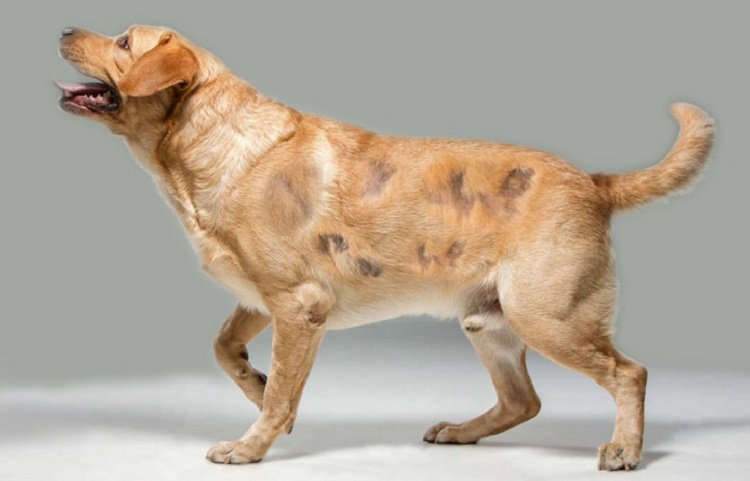Alopecia is generally defined as areas of abnormal hair loss, however, these bald spots are usually a sign of a larger health problem. The contributory factors of alopecia are many, some of which are easily cured while others are due to more chronic problems.
Nevertheless, proper knowledge and understanding of any issues warrant an efficient way to deal with the underlying problems.
Therefore, with a thorough understanding of symptoms, causes, and treatments of Alopecia in dogs, as a dog parent, you will be well prepared to deal with this problem at hand and in a timely manner.
What Is Alopecia?
Alopecia is basically a medical designation for hair loss. The types of Alopecia affecting dogs are quite variable and are generally classified on the basis of the cause or location of hair loss.
Similarly, the symptoms of Alopecia differ depending primarily on the location and causative agent of the condition.
Are you looking for Pet Care Services in Delhi NCR, Then download Monkoodog PetCare App.

Itching, inflammation, or swelling of the skin may also accompany Alopecia. Depending on the cause of the Alopecia, there may be round, focal areas of hair loss, symmetrical hair loss on the sides of the body, or even a moth-eaten appearance to the furry coat.
Also See: 3 Ways To Reduce Digestive Problems In Your Pooch
Causes of Alopecia in Dogs
Alopecia can be caused by many reasons, but generally, the causes are divided into two categories: congenital or acquired.
Some causes of Alopecia are specified while others are considered as simple underlying reasons for hair loss. The most common causes of Alopecia in canines include:
- Inheritance: Alopecia in canines can be inherited, in fact, it’s absolutely common to witness hair loss issues in pooches if their mother or father suffered from the same.
- Parasites and fleas are prominent causative agents of hair loss. They lead to intense itching and eventually, you may notice your furry companion losing hair around their lower back, inner thighs, neck, and ears.
- Poor diet and improper feeding habits often cause hair loss in dogs.
- Mange, a disease caused by the mite ‘Demodex’, also leads to Alopecia in canines.
- Hair follicle inflammation. Additionally, the disruption caused in the growth of hair follicles due to different reasons such as immune disease, infection, trauma, or endocrine system abnormalities also gives rise to hair loss issues in dogs.
Allergic reactions
- from food items or environmental factors can cause hair loss in dogs.
- Bacterial skin infections or Hot Spots.
- Overgrooming: grooming is normal, however, excess of anything is bad, and therefore excessive grooming often results in hair loss problems.
- Seasonal Alopecia: Certain canines are prone to seasonal hair loss issues, that is, they may experience hair loss each autumn which may take around 6 – 12 months to regrow. This type of Alopecia is quite common in Bulldogs, Staffordshire Bull Terriers, Dobermans, and Boxers.
- Ringworms ( which are typically displayed as circular patches of flaky, red, hairless patches.)
Abnormal or extensive hair loss in dogs can be an indication of a more specific disease, therefore it is highly recommended to see your vet as soon as you suspect that your dog is losing large amounts of its coat.
Also See: Mange In Dogs, What Shall Be The First Step and How To Treat It
Symptoms of Alopecia

Symptoms of Alopecia are often visible in the dog’s coat. Alopecia or Hair loss in dogs can be gradual, proceeding slowly but steadily over time, or it can be intense, resulting in sudden bald patches, besides other symptoms. However, in addition to hair loss and bald patches, several other symptoms are also common to Alopecia in Dogs
Here are several symptoms of Alopecia that can appear in dogs:
- Predominant hair loss
- Loss of hair around the eyes, head, neck, and mouth
- Bald patches
- Abnormal shedding
- Scaly and itchy skin
- Red patches, crusting, and inflammation of the skin, particularly around the area of hair loss.
- Wounds caused due to scratching Oozing or bleeding around areas of hair loss.
- Extensive Dandruff
- Patches of Discoloured, dark, or grey skin
How to Diagnose Alopecia in dogs

If prominent hair loss is observed in your pooch, the vet will proceed by determining the causative agent, in order to secure the right corrective treatment. The diagnostic measure may include:
- Skin cultures or biopsies
- Skin scrapings for parasites and ringworm
- Blood tests
- Physical Examination
Some forms of Alopecia do not have specific tests but are usually diagnosed after other causes have been ruled out.
Also See: How To Increase The Chances Of Your Pet To Conceive
Treatment for dog Alopecia

Treatment of Alopecia in dogs varies depending on the underlying causative agent as well as areas of hair loss issues. In some cases, anti-parasites, antibiotics, antifungals, or other medications may be needed to correct hair loss by correcting the underlying cause. However, other times especially in the case of Alopecia caused by autoimmune or genetic causes, there is generally no cure.
Some common treatments of Alopecia in Dogs include:
- Antibiotics, antifungals, and steroids.
- Antihistamines in case of allergic reactions.
- Medicated shampoos for various infections, particularly Mange.
- Flea and tick prevention and control contributes to reducing Alopecia caused by itchiness
- If Alopecia in your dog results due to your pooch’s chewing and licking, you can employ an Elizabethan collar to stop this behavior.
- The addition of several supplements such as Vitamin E, Vitamin A, and Fish oil, in your dog’s diet, contributes to the improvement of its coat health.
However, the best way to proceed is under the supervision of your veterinarian’s instructions.

